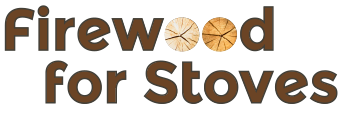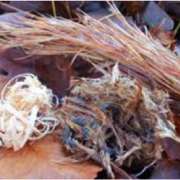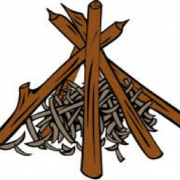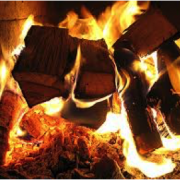An indoor open fire, although traditional and cosy, is an inefficient method of heating for two reasons:
- The heat is drawn from the fire and up the chimney by air flow.
- Draws centrally heated air away from the rest of the house.
All this heat is then replaced by cold air from drafts or vents around the house. Often, these open fires emit smoke and ash whilst giving out low efficient heat. In the long run, open fires can actually increase your heating costs. Open fires need a solid base to retain their ash bed. A coal grate is no good for this so wood can’t be effectively used. NB: All open, indoor fires require a mesh spark guard to reduce the risk of burns from sparking and crackly, damp wood.
The best form of indoor fire is a stove fire but even the efficiency of this can be improved if you know how to build your fire properly.
As with all things, the 5 P’s… Proper Preparation Prevents Poor Performance…. applies whether you are gathering your own wood or buying it from a supplier in log for, and for open floor fires or stove fires.
- Collect enough dead, dry, seasoned wood.
- If you struggle to get your fire started, use birch bark tinder to take the initial spark.
- Feed your fire, don’t smother it: Pay particular attention to the early stages.
- Add fuel in handfuls (of small sticks) rather than a stick at a time, and as frequently as needed.
- If cooking, do so over embers and not flames. Embers produce sustained heat.
- If it is an open, outdoor ground fire, ALWAYS return the area to its original state leaving no sign that you were there.
- Never burn contaminants, i.e. anything painted, varnished, other coating & preservatives because:
- the amount of tar produced will increase and deposits will build up in the chimney which could cause a chimney fire.
- melted debris will be left in the ash which will produce noxious and harmful gases into the smoke and could cause serious health implications
- CCA preserved and treated wood contains ARSENIC and should NEVER BE USED AS FUEL.
THE RULES OF FIRE.
- NEVER leave a fire unattended.
- ALWAYS keep children away from the fire at all times.
- NEVER underestimate the strength/pull of the wind or the potential reach of a fire.
- Keep long hair tied back when lighting a fire.
- Make sure fire extinguishers, buckets of water, fire beaters or piles of earth and shovel are easily within reach in case of an emergency.
- Stay calm and, no matter what happens, NEVER panic.
- NEVER use paraffin, petrol or methylated spirit to light or revive a fire.
- Carry fire starters, waterproof matches, a fire steel or lighter to use in an emergency.
- If outdoors, choose your site carefully. Avoid peat, areas with underground roots, areas with low branches.
Building You Fire – The Step by step Guide.
- Arrange your tinder (wood shavings, dry bark, lightly screwed up paper) in the centre of your fire area.
- Arrange your kindling in a wigwam fashion leaving gaps for the air to flow freely (you need oxygen for the fire to ignite) and for the match or lighter to reach the tinder.
- Once the tinder is alight, it will burn down and the kindling will catch. When this happens, now is the time to add your logs.
- Keep adding logs at regular intervals…and sit back and enjoy.





Should Wood Burning Stoves Be Sold with a Clear Health Warning?
/0 Comments/in Environment /by SuperadminFrom 2022, all new wood burning stoves must comply with the Clean Air Act. This is the same whether you live in the country surrounded by green pastures or in an urbane city environment.
The Best Artificial Logs for Wood Burning Stoves that You Can Buy in 2021
/0 Comments/in Top tips /by SuperadminLet’s face it, as aesthetically inviting to interior décor and comforting to the soul as a roaring fire can be, without the consistent warmth and crackle of a fire on a chilly spring evening, your wood burners won’t meet their purpose.